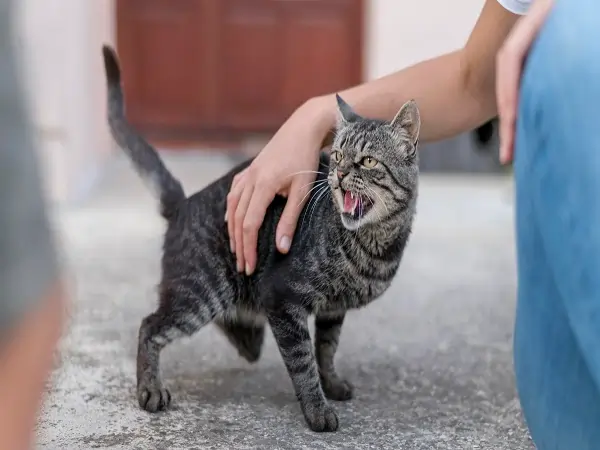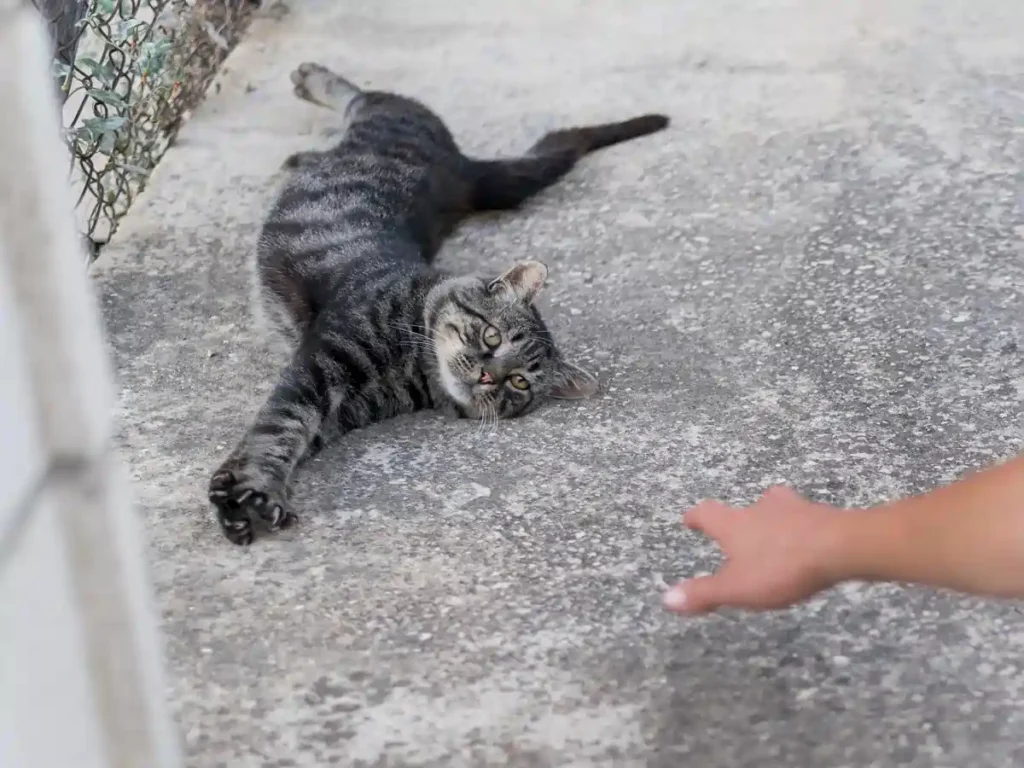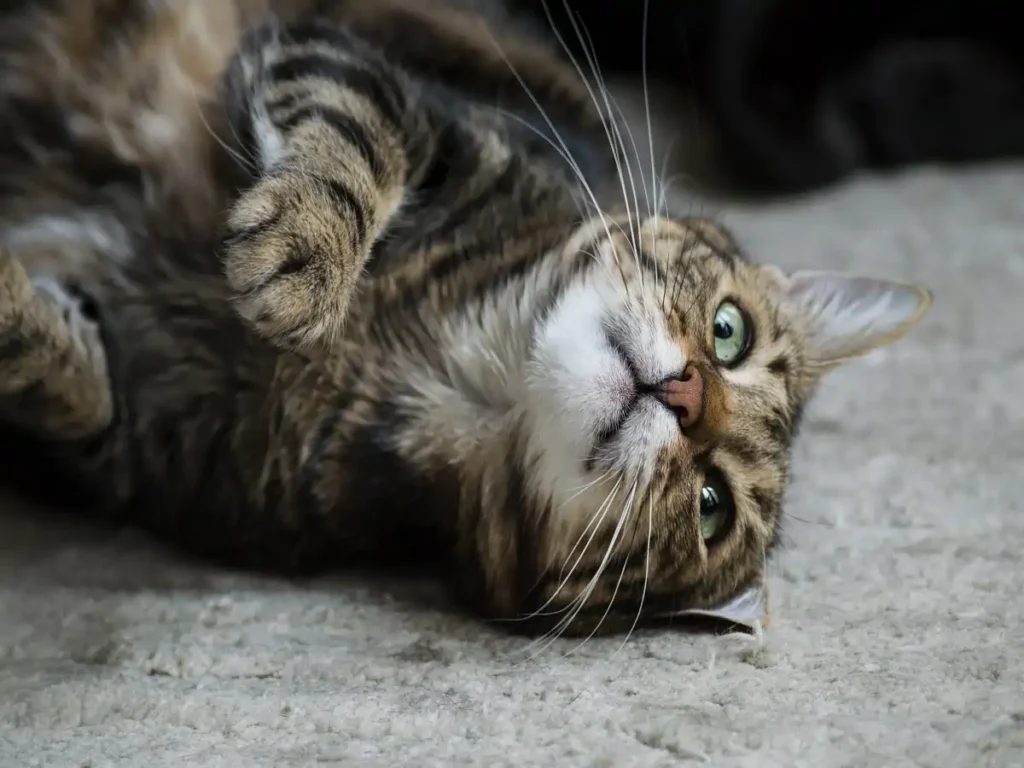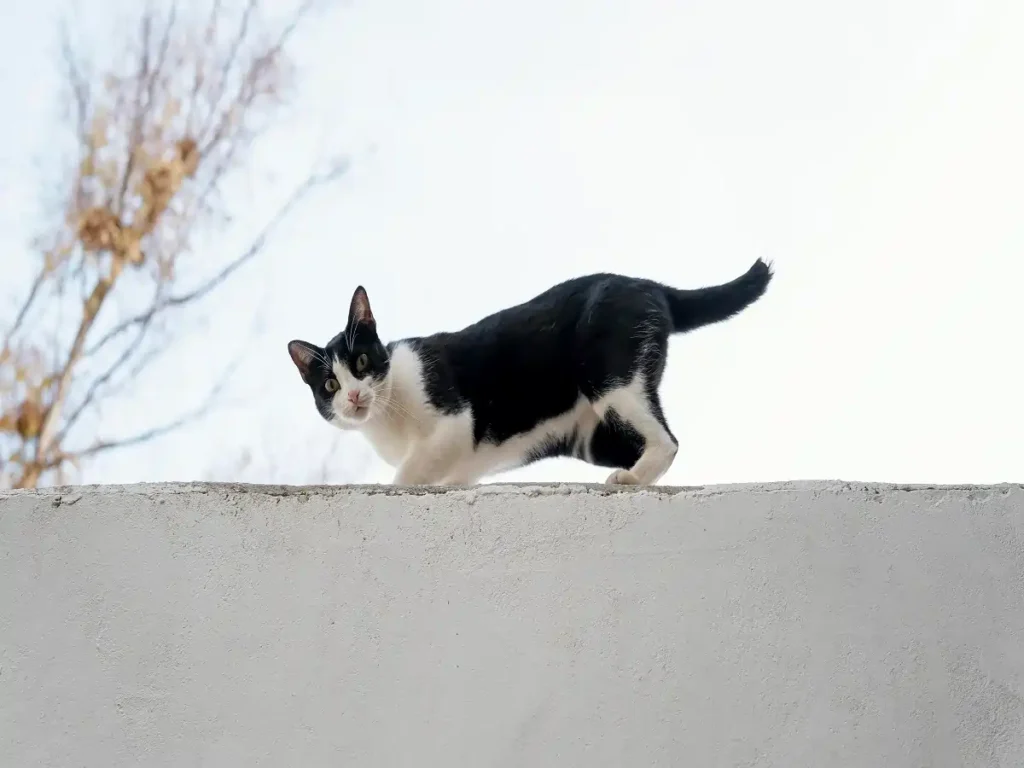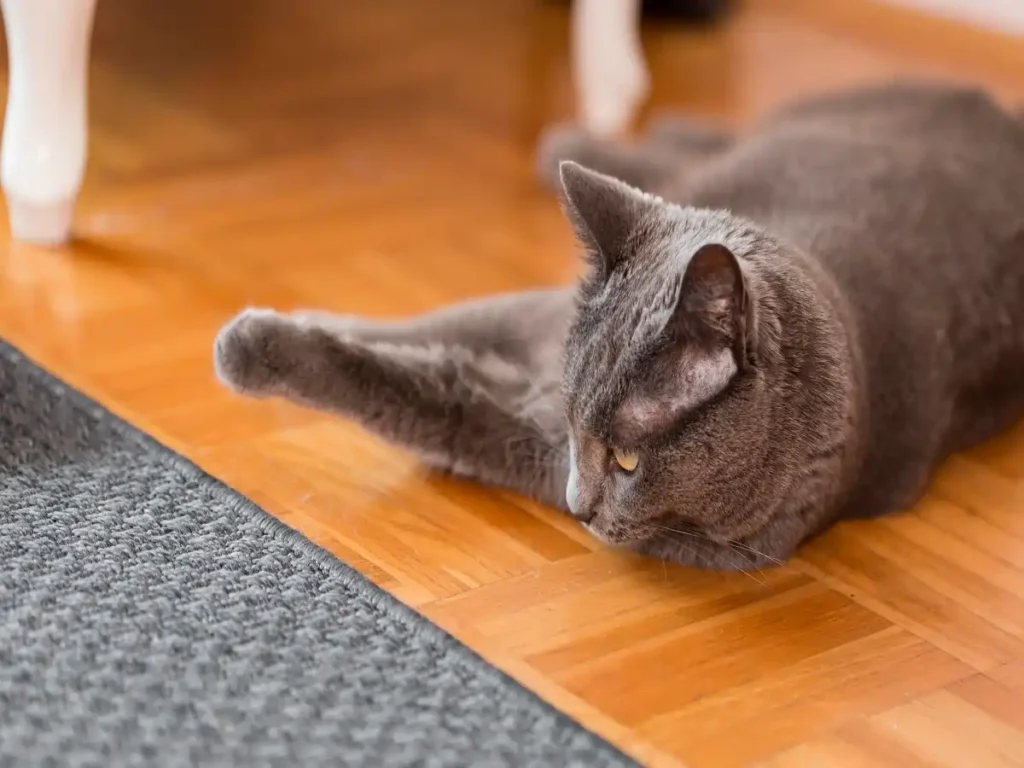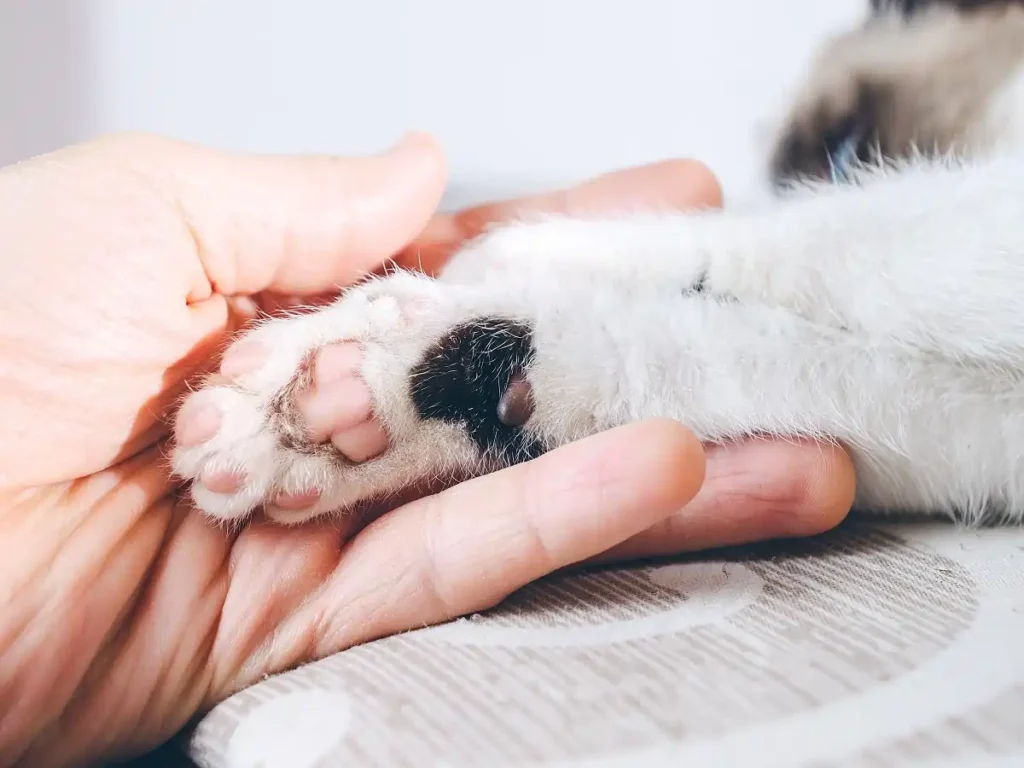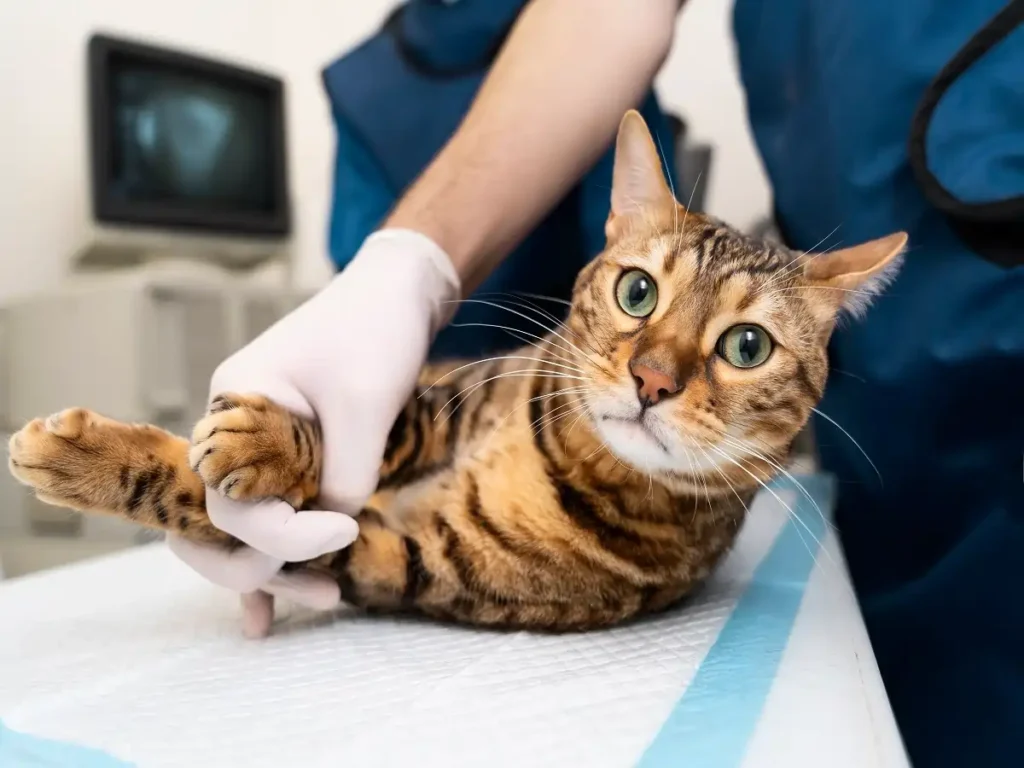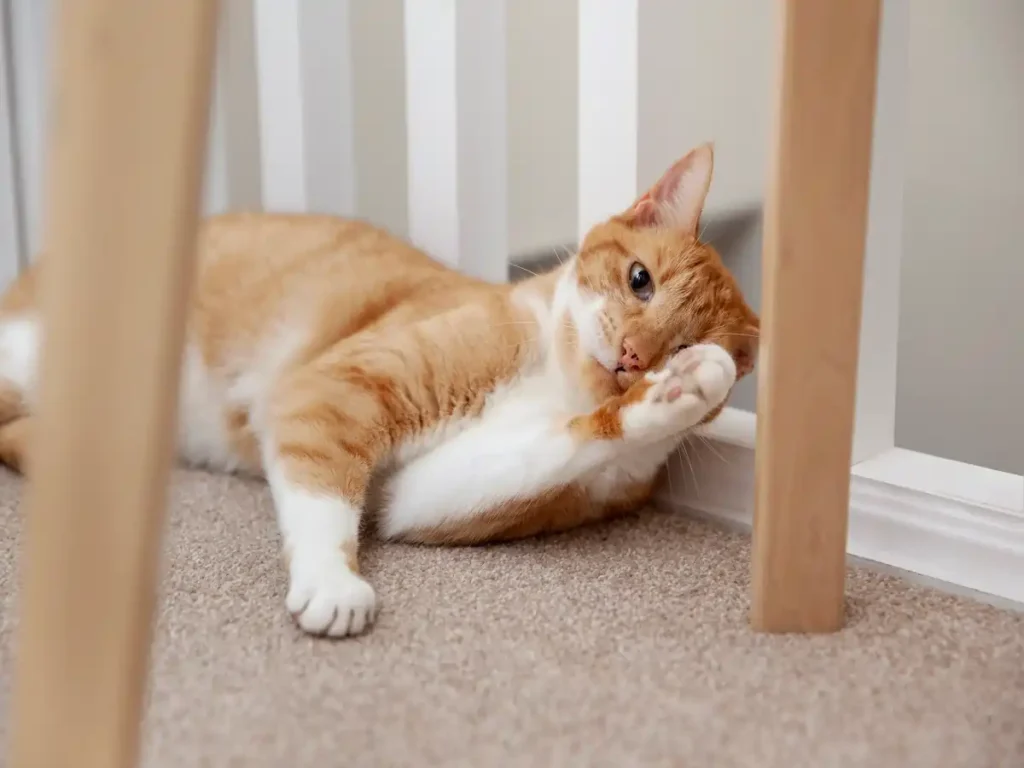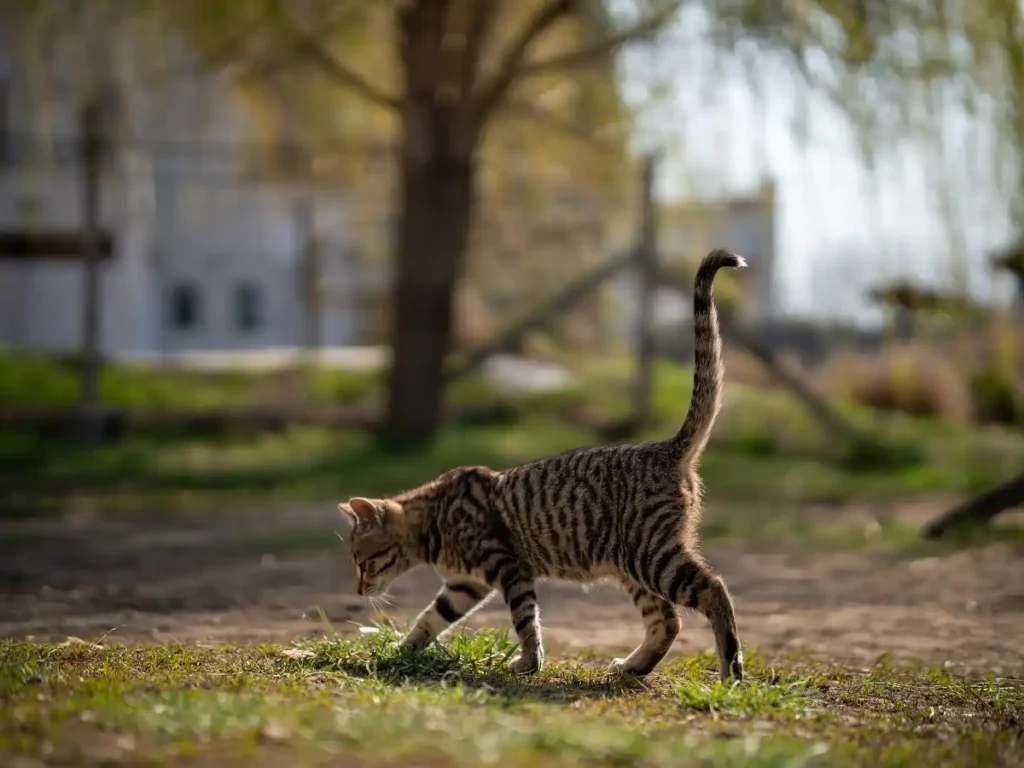Welcome to our blog. Today, we discuss important and most concerning questions for many cat owners: “Why is my cat limping? Seeing your cat limp can be worrying. Just like people, cats can get hurt and start limping. It could be from a small injury or something more serious. Understanding why your cat is limping is important so you can help them feel better. There are lots of reasons why cats limp, like injuries, infections, or diseases.
In this guide, we will help you understand why your cat might be limping and how you can help them. We will talk about how to spot signs of discomfort, common reasons for limping, and what you can do to make them feel better. Our goal is to give you the knowledge and tools you need to keep your furry friend healthy and happy.
Let’s figure out why your cat is limping together and help them get back to feeling their best.
Table of Contents
ToggleWhat Is Cat Limping?
When a cat limps, it means they are walking strangely or having trouble with one or more legs. They might not put weight on a leg or walk differently, showing they are in pain. Many things can make a cat limp, like injuries, infections, arthritis, or health problems. If you see your cat limping, it is important to take care of them and help them to feel better.
Symptoms / Signs of Limping in Cats
It is important to notice if your cat is limping. They might show signs like being tired, hiding, growling, or making more noise than usual. You might also see them limping or favouring one leg, having trouble moving, or having swollen or bruised areas. Keep an eye on them, watch how they walk, and write down any changes you see. By paying attention and being careful with your cat, you can quickly see if they are uncomfortable and do things to help them feel better. If you are worried, talk to your vet. They can check your cat and make a plan to help them feel better, based on what they need.
5 Common Causes of Limping in Cats
If your cat starts limping, it is normal to worry and wonder why they are in pain. Cats can limp because of different reasons, like getting hurt or having health issues. Here are some common things to think about:
1. Injury or trauma
Injury or trauma is one of the most common reasons for a cat to limp. Sometimes, cats can start limping because of injuries. Even though cats are good at moving. They can still fall or jump in the wrong way, which can hurt them. For example, outdoor cats might get into fights with other animals and end up with scratches or bites that cause wounds. These wounds can get infected, making the pain worse and causing more swelling, which can make them limp. Knowing that injuries can make cats limp shows how important it is to keep them safe and take them to the vet if they are hurt. This way, they can get the right treatment and feel better quickly.
2. Accidents or falls
Sometimes, cats can start limping because they had an accident or fell down. Even though cats are good at jumping. But they can sometimes make mistakes and land badly, which can hurt their legs. Also, slipping on slippery floors can twist their joints or strain their muscles, making them limp for a while. It is important to make sure cats have safe places to climb and walk to avoid accidents. If a cat does get hurt and starts limping, it is important to keep an eye on them. Take them to the vet if the limping does not get better. This way, the vet can find out what’s wrong and help them feel better.
3. Arthritis or Joint Problems
Arthritis and joint problems can make it hard for a cat to move comfortably. This can cause them to limp. Let’s see how these issues can lead to limping in cats:
Aging
As cats get older, their joints may start to wear out, causing arthritis. This makes their joints swollen and stiff, making it painful to move. Cats may limp because they’re trying to avoid putting pressure on the sore joint.
Previous Injuries
Cats that have been hurt in the past may develop arthritis later on. Injuries like fractures or dislocations can damage the joints, leading to arthritis over time. This can cause chronic pain and stiffness, making it difficult for cats to move without limping.
Understanding how arthritis and joint problems can make cats limp shows why it is important to catch these issues early and help manage them. Making sure cats have a comfy place to rest and easy access to food and water can ease their discomfort. Giving them supplements like glucosamine and omega-3 fatty acids can also support their joints. Regular vet check-ups are important to keep an eye on their condition and adjust treatment as needed, so they can live a happy and comfy life despite arthritis or joint issues
4. Infections or Abscesses
Infections or abscesses can make cats feel really uncomfortable and cause them to limp. Let’s see how these problems can make a cat limp:
Paw Injuries:
Cats are really careful when they clean themselves. But they can accidentally hurt their paws while playing or exploring. Small cuts, wounds, or stuff stuck in their paw pads can let bacteria in, which can cause infections. These infections can make their paws hurt, swell up, and get red, making it hard for them to walk normally. So, they might limp to ease the pain and pressure on their hurt paw.
Bite Wounds:
Cats that go outside a lot can get into fights with other animals, which can lead to bite wounds that turn into abscesses. Bites from other cats or animals can let bacteria deep into their skin, causing pus-filled abscesses to form. These abscesses usually happen around the head, neck, or legs and can really hurt. Cats might limp if the abscess is on their leg or if the infection spreads, making it hard for them to move without pain.
Understanding how infections or abscesses can make cats limp reminds us to check our furry friends carefully if they start limping or seem uncomfortable. Look closely at their paws and legs for any injuries or swelling. And if you think they might have an infection or abscess, it is important to take them to the vet right away. They might need antibiotics, special care for their wounds, or even surgery to help them feel better.
5. Other Medical Conditions
Limping in cats can happen because of different health problems, not just injuries or infections. Knowing about these problems is important so you can take care of your cat the right way. Here is how other health issues might make a cat limp:
Tendon or Ligament Injuries:
Cats can hurt their tendons or ligaments from sudden accidents or doing the same activity over and over again. Things like jumping or running can make these injuries worse, making cats limp as they try to move less where it hurts. These injuries often need a vet to check them out and might need rest, exercises, or even surgery if they are really bad.
Neurological Issues:
Some problems with a cat’s nerves or brain can mess up their coordination and how they move, causing limping or trouble walking. Conditions like spine injuries, diseases that make things break down, or nerve damage can stop cats from moving their legs right, leading to odd walking and moving issues. Finding and treating these problems usually needs special tests and sometimes care from animal brain experts.
Knowing that other health problems can make cats limp shows why it is so important to take them to the vet and get them checked out if they keep limping or have trouble moving. A good vet can figure out what is wrong and make a plan to help them feel better, so they can get back to their normal, happy selves.Top of Form
What Should I Do If My Cat Is Limping? / Steps to Take if Your Cat Is Limping
Finding out that your cat is limping can worry you, but acting fast can help them feel better quickly. Here is what you can do if your cat is limping:
Initial Assessment at Home:
If you see your cat limping, start by checking at home. Look closely at how much they are limping and which leg is affected. Check their legs and paws gently for any cuts, bruises, or things stuck in them. Also, pay attention to how they are acting. If they seem in pain or upset, that is important to know too. Handle your cat gently and avoid putting weight on the hurt leg. This will give you helpful info to tell your vet and decide what to do next for your limping cat.
Contact Your Veterinarian:
After you have checked your limping cat. It is important to talk to your vet for more help. Tell them all about what is going on, like when the limping started, any recent injuries, and if your cat’s acting different. Your vet will tell you if you need to bring your cat in for a checkup or if it is an emergency. It is important to talk to your vet quickly so your cat can get the right treatment and feel better soon.
Provide Comfort and Support
While you are waiting for the vet to check your limping cat, make sure they have a comfy place to relax. Find a quiet spot away from noise where your cat can rest. Make it cozy with soft bedding and keep them warm. Try not to move or touch your cat too much to avoid hurting them more. Give them gentle company to help them feel better during this stressful time. Creating a calm and cozy environment will help your cat feel more comfortable while they wait for the vet.
Transporting to the Veterinarian/ Travelling Guidelines
When you are taking your limping cat to the vet, make sure they are safe and comfy. Put them in a secure carrier to keep them safe and prevent them from escaping. Be gentle with them, especially if they are hurting. Choose a carrier with enough room for them to move comfortably. Drive carefully to keep your cat calm. These steps will help you get your cat to the vet safely for a check-up and treatment.
Preventive Measures and Long-Term Care
To keep your cat healthy and prevent limping, it is important to take proactive steps. Here are some easy ways to help your cat stay healthy and avoid limping in the future.
Provide a Safe Environment:
Making sure your home is safe for your cat is super important to avoid accidents and injuries that could cause limping. First, check for things like sharp objects, harmful stuff, or small things they might eat. Also, make sure windows and balconies have strong screens or nets to stop them from falling. Get furniture and toys that are safe for cats to play with. Doing these things makes your home safer for your cat and helps keep them happy and healthy.
Maintain a Healthy Weight and Lifestyle:
Keeping your cat at a healthy weight and helping them stay active is super important to prevent joint problems and limping. Give them good food that matches their age, breed, and how much they move around. Don’t give them too much food to avoid them getting too fat, which can hurt their joints. Make sure they play and move around a lot with toys and games to keep them fit and happy. This helps them stay flexible and moving well for a long time.
Regular Veterinary Check-ups:
Regular visits to the vet are super important to keep your cat healthy and prevent limping. Make sure to schedule check-ups at least once a year. The vet will check everything, like your cat’s weight, teeth, and how well they move. They might also give vaccinations and tests to catch any health problems early. By staying on top of these check-ups, you can make sure your cat stays healthy and avoids any limping issues.
Monitor for Signs of Recurrence or New Issues:
It is important to keep an eye on your cat for any signs of limping or discomfort. Watch how they walk and if they seem to be favouring any legs or not moving much. Look out for signs like meowing more, eating less, or grooming less. Also, check their surroundings for anything that could make it hard for them to move around. If you notice anything worrying, it is best to take them to the vet right away. By staying alert and taking action early, you can make sure your cat stays healthy and gets the help they need.
By following these steps and keeping an eye on your cat’s health, you can help them stay happy and free from limping. Regular vet check-ups and watching for any problems early on are important for taking good care of your furry friend.
Final Words
In conclusion, it is important to figure out why your cat is limping and do what you can to help them feel better. Recognizing the signs of limping, getting vet care, and giving them comfort at home are all important. Taking steps like keeping their environment safe, helping them stay a healthy weight, and going to the vet regularly can prevent injuries and health issues that might cause limping. Also, keeping an eye out for any signs of limping coming back or new problems can help catch issues early. By taking care of your cat this way, you can help them have a happy, active life without limping.

